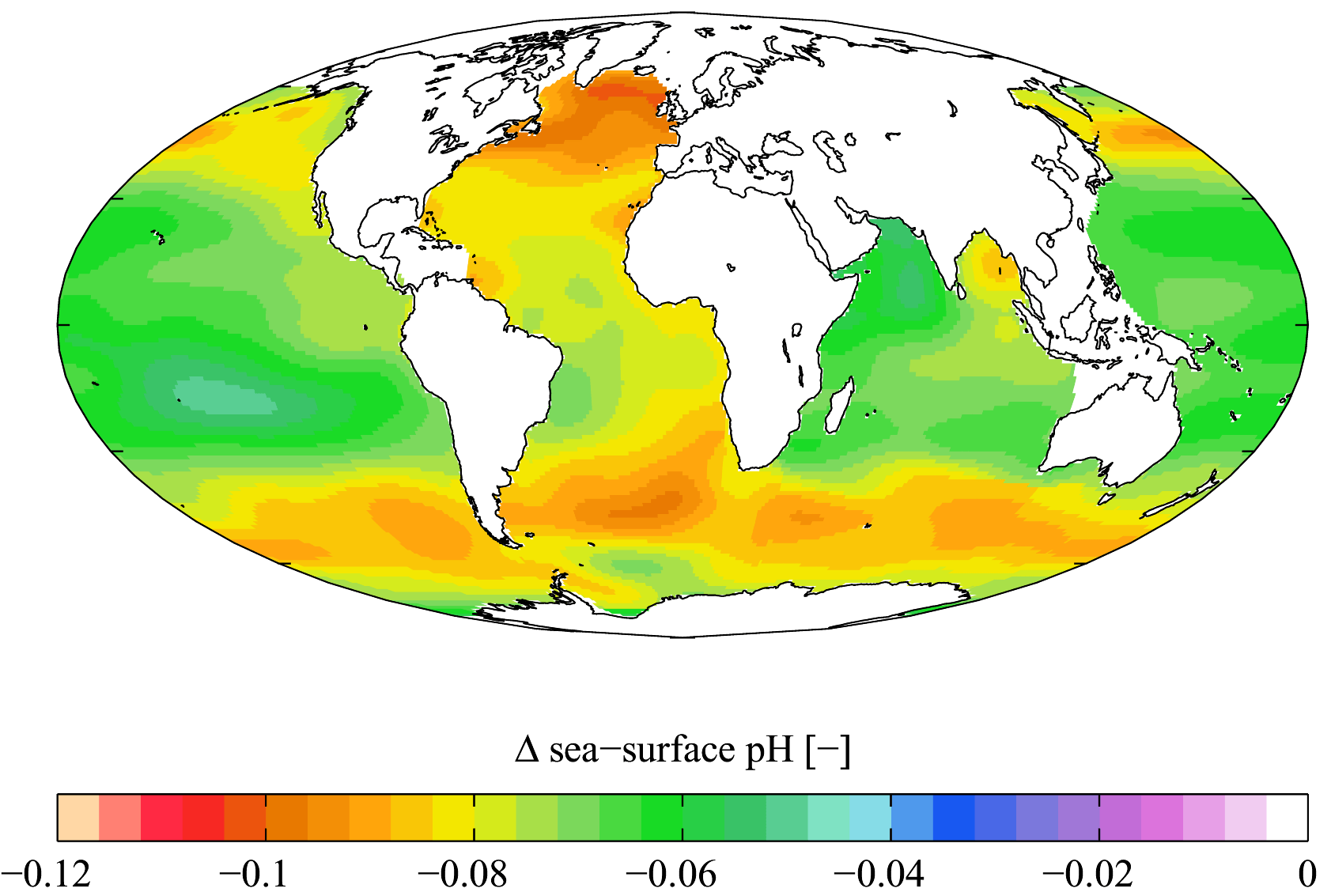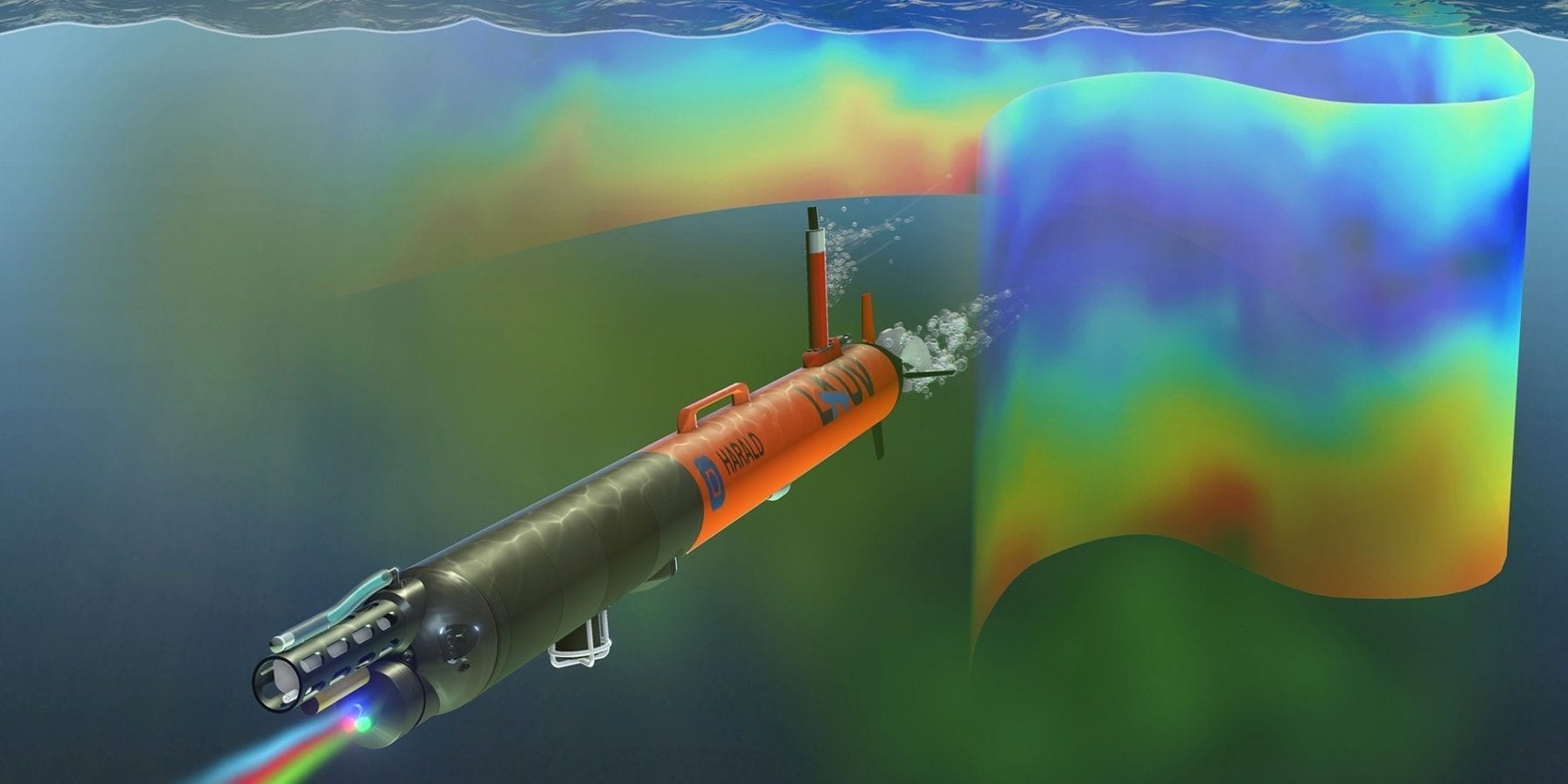
Study finds many species may die out and others may migrate significantly as ocean acidification intensifies
Oceans have absorbed up to 30 percent of human-made carbon dioxide around the world, storing dissolved carbon for hundreds of years. As the uptake of carbon dioxide has increased in the last century, so has the acidity of oceans worldwide. Since pre-industrial times, the pH of the oceans has dropped from an average of 8.2 to 8.1 today. Projections of climate change estimate that by the year 2100, this number will drop further, to around 7.8 — significantly lower than any levels seen in open ocean marine communities today.
Now a team of researchers from MIT, the University of Alabama, and elsewhere has found that such increased ocean acidification will dramatically affect global populations of phytoplankton — microorganisms on the ocean surface that make up the base of the marine food chain.
In a study published today in the journal Nature Climate Change, the researchers report that increased ocean acidification by 2100 will spur a range of responses in phytoplankton: Some species will die out, while others will flourish, changing the balance of plankton species around the world.
The researchers also compared phytoplankton’s response not only to ocean acidification, but also to other projected drivers of climate change, such as warming temperatures and lower nutrient supplies. For instance, the team used a numerical model to see how phytoplankton as a whole will migrate significantly, with most populations shifting toward the poles as the planet warms. Based on global simulations, however, they found the most dramatic effects stemmed from ocean acidification.
Stephanie Dutkiewicz, a principal research scientist in MIT’s Center for Global Change Science, says that while scientists have suspected ocean acidification might affect marine populations, the group’s results suggest a much larger upheaval of phytoplankton — and therefore probably the species that feed on them — than previously estimated.
“I’ve always been a total believer in climate change, and I try not to be an alarmist, because it’s not good for anyone,” says Dutkiewicz, who is the paper’s lead author. “But I was actually quite shocked by the results. The fact that there are so many different possible changes, that different phytoplankton respond differently, means there might be some quite traumatic changes in the communities over the course of the 21st century. A whole rearrangement of the communities means something to both the food web further up, but also for things like cycling of carbon.”
The paper’s co-authors include Mick Follows, an associate professor in MIT’s Department of Earth, Atmospheric and Planetary Sciences.
Winners and losers
To get a sense for how individual species of phytoplankton react to a more acidic environment, the team performed a meta-analysis, compiling data from 49 papers in which others have studied how single species grow at lower pH levels. Such experiments typically involve placing organisms in a flask and recording their biomass in solutions of varying acidity.
In all, the papers examined 154 experiments of phytoplankton. The researchers divided the species into six general, functional groups, including diatoms, Prochlorococcus, and coccolithophores, then charted the growth rates under more acidic conditions. They found a whole range of responses to increasing acidity, even within functional groups, with some “winners” that grew faster than normal, while other “losers” died out.
The experimental data largely reflected individual species’ response in a controlled laboratory environment. The researchers then worked the experimental data into a global ocean circulation model to see how multiple species, competing with each other, responded to rising acidity levels.
The researchers paired MIT’s global circulation model — which simulates physical phenomena such as ocean currents, temperatures, and salinity — with an ecosystem model that simulates the behavior of 96 species of phytoplankton. As with the experimental data, the researchers grouped the 96 species into six functional groups, then assigned each group a range of responses to ocean acidification, based on the ranges observed in the experiments.
Natural competition off balance
After running the global simulation several times with different combinations of responses for the 96 species, the researchers observed that as ocean acidification prompted some species to grow faster, and others slower, it also changed the natural competition between species.
Read more: Ocean acidification may cause dramatic changes to phytoplankton
The Latest on: Ocean acidification
[google_news title=”” keyword=”Ocean acidification” num_posts=”10″ blurb_length=”0″ show_thumb=”left”]
via Google News
The Latest on: Ocean acidification
- HOW I TEACH: Helping Students Become Environmental Changemakerson April 30, 2024 at 1:40 am
Caring for Our Watershed is an international program that empowers students to take action to improve the health of their local watershed. One of the regional contests takes place in Northern Colorado ...
- Museum Program Will Look At Ocean Acidificationon April 25, 2024 at 9:00 pm
The Cape Cod Museum of Natural History in Brewster will present four sessions of “Ocean Commotion” on Saturdays, May 4 and 18, and June 1 and 15, from 10:30 to ...
- OCEAN ACIDIFICATIONon April 25, 2024 at 7:32 pm
Sign our petition to help protect ocean life from ocean acidification. Shell-forming animals like corals, crabs, oysters and urchins are getting hit first because ocean acidification robs seawater of ...
- Elaina’s Experiments: Ocean acidificationon April 22, 2024 at 3:32 pm
On this segment of Elaina’s Experiments observe how water absorbs carbon dioxide causing it to change colors through acidification. Chelsy Lancaster, a STEM Program Specialist with the Kern County ...
- Elaina’s Experiments: Ocean acidificationon April 22, 2024 at 3:32 pm
BAKERSFIELD, Calif. (KGET) — On this segment of Elaina’s Experiments observe how water absorbs carbon dioxide causing it to change colors through acidification. Chelsy Lancaster, a STEM ...
- Oregon could place limits on river trash, ocean acidificationon April 17, 2024 at 5:00 pm
Photo courtesy of Willamette Riverkeeper In addition to aquatic trash, DEQ added two additional types of water pollution to its report this year: ocean acidification and hypoxia, and PFOS ...
- Is there a quick fix for ocean acidification? (video)on April 15, 2024 at 9:39 am
Can an antacid solve ocean acidification? No, but it could still help the climate crisis.
- Is There a Fix for Ocean Acidification?on April 10, 2024 at 5:00 pm
(via Reactions) The ocean is getting more and more acidic. Can we solve it by emptying a giant bottle of antacid into the ocean? No… but the idea of lowering the ocean’s acidity in order to decrease ...
- Water pollution is fueling ocean acidification. Environmentalists urge California to acton April 10, 2024 at 5:00 pm
And here’s one important fact about ocean acidification: It’s not happening at the same rate everywhere. The California coast is one of the regions of the world where ocean acidification is occurring ...
- Ocean Acidificationon April 9, 2024 at 5:00 pm
Rising CO2 pollution in the atmosphere is also raising ocean acidity at a rate 100 times faster than any during the past 55 million years Ocean acidification Uncertainty limits 8.047 2022 15 05 ...
via Bing News











